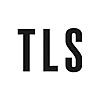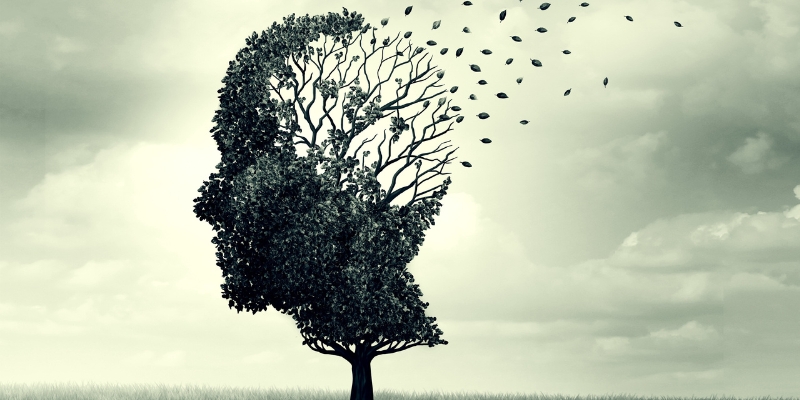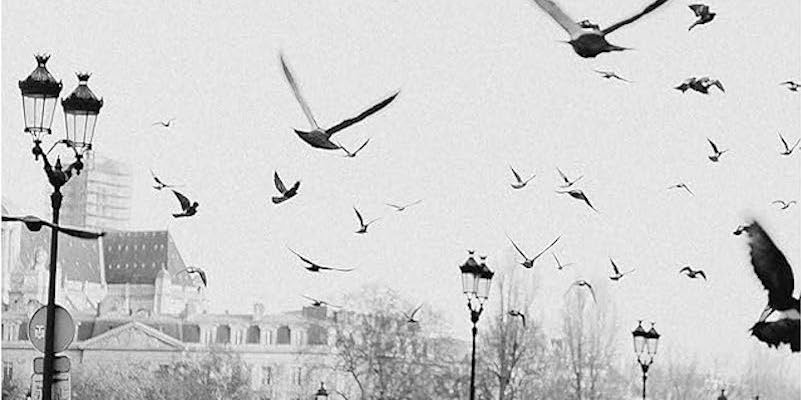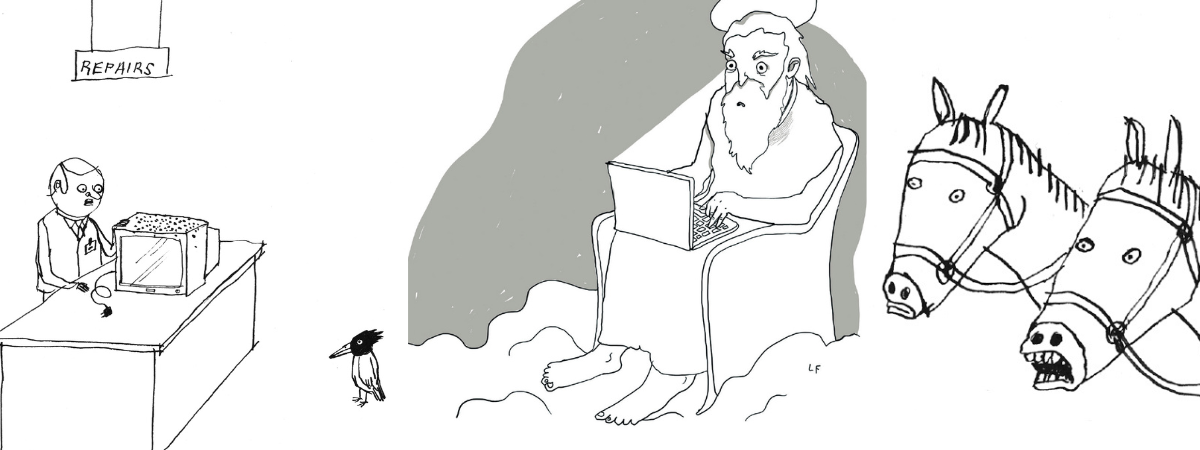“How should one read a book?” Virginia Woolf asked this question, in different forms, throughout her life. In an essay of 1926 with that title, she described the pure pleasure that readers know: the curiosity, then the fizzing excitement, as you encounter the workings of the writer’s mind and attempt to trace the design they have created. In this moment of “actual reading”, Woolf encourages us to be generous towards the writer, “to skip and saunter, to suspend judgment, to lounge and loaf down the alleys and bye-streets of letters”, however hard this might be. “Be his fellow worker, become his accomplice”, she exhorts; in other words, give the author the benefit of the doubt and try to understand what they wanted to achieve. Only then is it time for the “after reading”, the moment when you step back and decide: is this good?
It is hard to keep up the separation demanded by this programme of “actual” and “after” reading. One moment you are lost in the writer’s world, skipping with her down unknown streets. The relationship between writer and reader is blurry at this stage: reading is a generous act, but Woolf describes this identification as stimulating to the reader too, “the best way of rejuvenating one’s own creative power”. Is it thinkable that the next moment you might erect a wall between the two of you, stand back and be objective? Reading is a mysterious process: “The friction of reading and the emotion of reading beat up too much dust” to make judgement simple.
Woolf was a prodigious and subtle reader, but the more public aspects of literary culture often vexed her. Self-conscious about lacking the Cambridge education of her brothers, she aligned herself (democratically but perhaps defensively) with what Samuel Johnson called “the common reader”. In a collection of essays of that name, published in 1925 (a second followed in 1932), she defined this every-reader as a pleasure-seeker, driven by passion rather than judgement. Woolf was also a prolific critic, but she felt ambivalent about the “indecent publicity” of putting her name to newspaper writing. Anne Reus points out in her study of the novelist as a critic of nineteenth-century women writers that this sense of shame is haunted by a lingering expectation that women should remain obscure. The sniffy anxiety about self-promotion betrays her need to distinguish herself from the ordinary professional author. Reus is clear that Woolf’s own investments and influences – and prejudices – coloured the way she read those who came before her. Despite her squeamishness about publicity she used these figures to make a place for her own work. And though she worried about the “indiscretion” of discussing writers’ lives, she often did, in ways that were moulded by nineteenth-century biographies.
These considerations show in her first piece about Jane Austen, a book review published in the TLS in 1913. Woolf echoes the Victorian biographers’ version of this exemplary woman, whose prose “has too little of the rebel in her composition, too little discontent”. She wishes Austen had taken more risks, been less genteel. She puts it down to the context: “A clergyman’s daughter in those days was, no doubt, very carefully brought up”. Woolf’s reading of Austen changed when she read the juvenilia. Here, Reus suggests, she found the author she wanted: a writer concerned with illegitimate children, adultery and moral satire, a young woman of the eighteenth century rather than the repressed one of the nineteenth. This less than perfect writer was also the keynote of Woolf’s response to Persuasion in a new collected works. In Austen’s final novel, Woolf noted a shift towards emotional depth and experiential truth. In other words, Reus argues, she cast Austen as her precursor. Whether maiden aunt or modernist precedent, Austen was used by Woolf to measure her own approach to fiction, and to feminism.
In A Room of One’s Own(1929), she claimed Austen as the originator of the “female sentence”, a style that is conditioned by women’s lives, but remains poised, above the fray. Woolf’s intellectual wrangling here is notorious – the woman writer writes like a woman, but should try not to show it too much – and involves pitting Austen against Charlotte Brontë. Where Austen wrote with grace, Brontë exposed too many of her feelings about her secondary status. Poor Jane, required to be feminine all over again. Poor Charlotte, deemed to be too angry.
In fact, Woolf once felt that Brontë had captured something of her own frustrations. She seemed able, in a way that Woolf was not, to speak out against voicelessness, to “seize the silver table by the legs or dash the teacups on the floor”. But as Woolf’s modernist project developed, as she worked her way towards a more impersonal style, Brontë became the incensed figure she is in A Room. Reus’s argument here is interesting. Brontë’s anger allows Woolf both to allude to protest – the earlier novelist remains the teacup-dasher she once admired – and to distance herself from it. Perhaps this mixed-up love and distaste for one’s heroines is part of what Kate Zambreno calls “the ecstasy of influence”. Reading ecstatically (rather than anxiously, as Harold Bloom had it) is a shakedown: we grab the parts we find urgent and necessary, rejecting those that suit us less. Woolf’s “common reader” does this too: “He never ceases, as he reads, to run up some rickety and ramshackle fabric which shall give him the temporary satisfaction of looking sufficiently like the real object to allow of affection, laughter, and argument”.
Woolf sometimes punched low in her reviews. Reus examines the case of Mary Russell Mitford, a nineteenth-century woman of letters whose star had since fallen. In the last of a series of three acerbic responses to both Mitford and her biographer, Constance Hill, Woolf tries out a kind of biographical spoof. Parodying what she sees as Hill’s superficial, rambling writing and Mitford’s staid provincial life, Woolf creates a fanciful narrative for Mitford in the vein of Tristram Shandy: “So Miss Mitford was born in the breakfast room about eight-thirty in a snowy morning between the Doctor’s second and third cup of tea”. What looks like mean-spiritedness was also, Reus argues, an experiment in speculative life writing. During the 1920s Woolf was developing her thoughts about the limitations of biography, the impossibility of knowing the truth about anyone, and therefore the superiority of fiction. By testing what she later called the “New Biography” in her response to Mitford and Hill, she was sacrificing two other women to her modernist innovations. Reading their writing as baffling and bad helped Woolf to assert hers as novel and sophisticated.
Presumably this was not what she had in mind when she wrote, in A Room, that “we think back through our mothers if we are women”. If one of that essay’s aims was to examine why there is no tradition of women’s writing, another was to begin to create one. This “imagined community” of writers and readers, as Reus calls it, is more often seen as harmonious, a source of strength and support. But we should, of course, also see it as a dynamic entity, shaped as much by disagreements and disaffection as by reverence and respect. This is the way feminists of colour have read Woolf herself, for example, recognizing that her concerns were not necessarily theirs. Gloria Anzaldúa rejected the ideal room of one’s own and wrote anywhere she could, from the kitchen table to the toilet. Audre Lorde pointed out that paper and a typewriter might be the more basic needs for a working-class writer.
Elizabeth Abel is interested in this less monolithic Woolf. Her book Odd Affinities connects the novelist with figures to whom she seems barely related and puts feminism aside as the privileged way of reading her work. Abel resists Bloom’s hand-wringing model of influence, preferring instead Wai Chee Dimock’s looser framework, “resonances” (as Anne Fernald did in her Virginia Woolf: Feminism and the reader, 2006). Mrs Dalloway resonates in Nella Larsen’s Passing (1929), which also follows a woman in the city, her comfortable middle-class life unsettled by the past. Mrs Dalloway’s opening plunge into Clarissa’s consciousness (“Mrs Dalloway said she would buy the flowers herself”) is echoed in Passing’s Irene Redfield:
The morning’s aimless wandering through the teeming Harlem streets, long after she had ordered the flowers which had been her excuse for setting out, was but another effort to tear herself loose.
Irene is a Woolfian protagonist, all depths and secrets. She is shaped, Abel suggests, by Woolf’s discovery that she could create an interior life for a character by “tunnelling” backwards into the “caves” of their memory.
While Woolf twins Clarissa with the shell-shocked soldier Septimus Smith, whose damaged mind is equally cavernous, Larsen pairs Irene with Clare Kendry, a character of glittering surfaces. Her passing as white is just one of many masquerades in a book that is as concerned with appearances as it is with depths. And though Clare tries to evade, by passing, the consequences of living as a Black woman in early-twentieth-century America, the spectacle she creates as she moves through the book in gorgeous outfits makes her, Abel says, a Josephine Baker figure, or a Black dandy. In this account Irene and Clare are avatars of an artistic battle: between an anglophone modernism that escapes material realities through interiority and a self-consciously Black aesthetic that prioritizes theatricality.
Woolf is a test case, a means to assess competing traditions. To which modernism does Larsen want to hitch herself, Bloomsbury’s transcendence or Harlem’s race consciousness? For James Baldwin, the same dilemma was represented by two opposing models: the intricate design of Henry James and the social realism of Richard Wright. In Giovanni’s Room (1956), Woolf’s example helps him to steer a course between these two ideals: Jacob’s Room shows us a queer life lived against conventions, and Mrs Dalloway ends with the suicide of Septimus so that Clarissa can live. Baldwin replicates the latter “sacrifice”, as Abel puts it, with the death of his own outcast, Giovanni. Echoing Woolf, he wrote a highly patterned ending: Giovanni dies so that his lover, David, may finally accept the homosexuality from which he has been running. Baldwin was running too, Abel suggests: looking to Woolf for an aesthetic solution to a social problem, he could avoid the social critique so often expected of writers of colour.
There are psychoanalytic rumblings beneath these responses to Woolf. Abel is a critic of Freud and his literary legacies. In Odd Affinities, Woolf emerges as both Oedipal mother and father, the progenitor to be embraced or dispatched. In her final chapters Abel turns accordingly to two postwar works: Roland Barthes’s Camera Lucida (1980) and W. G. Sebald’s Austerlitz (2001). For both Barthes and Sebald, the elegiac To the Lighthouse is a touchstone for dealing with the death of a beloved mother. But both hesitate to follow Woolf faithfully. Her tender of aesthetic redemption for maternal loss, in the form of Lily Briscoe’s abstract painting, seems untenable after the accumulated traumas of the century. Instead of mourning it is Freud’s opposing term, melancholia, that Barthes and Sebald take up. Whether individual or collective, grief is inconsolable in their accounts: it cannot be solved aesthetically.
Abel’s version of Woolf the formalist derives in part from her focus on the mid-1920s novels. The Woolf of the 1930s dealt more directly with politics. The rise of fascism affected her deeply and her convictions about patriarchal power were strengthened by what she saw happening in Europe. She was still attuned to escapism, but just as worried about the manipulative effects of being caught up in this way. Looking for connections between people in this violent decade, she kept a wary eye on coercive forms of belonging. This is the context for Reading Modernism’s Readers by Helen Tyson, which uses Woolf to think about the role of literature “in dark times”. Her novels are full of people immersed in books. On the surface the passage in To the Lighthouse when Mrs Ramsay reads “The Fisherman and His Wife” to her son James is an idyllic scene, full of “the pleasures and consolations” of reading. But Tyson wagers that Woolf is sceptical of our tendency to romanticize childhood. Mrs Ramsay seems to use this sweet moment to push away anxious thoughts: “When she read just now to James … why should they grow up, and lose all that?” In The Waves these investments and illusions take on a darker aspect when characters turn to art to make themselves feel bigger. Neville, a poet and aspiring scholar, reads to “oppose the waste and deformity of the world, its crowds eddying round and round disgorged and trampling”. Immersing himself in classical literature, he adopts a distasteful distance from others as he tries to sustain a fantasy of male authority.
In the 1930s, Tyson argues, it was harder to ignore the investments and fantasies involved in reading. Louis, another poet in The Waves, reflects on the “binding power of poetry”, but also on the troubling way it “ropes you in”. Reading is a source of communal feeling but, given that communal feeling was the very thing exploited at fascist rallies, this immersive identification was increasingly suspect. Another part of the picture for Tyson, also a scholar of psychoanalysis, is a developing awareness in the period of the “intimate psychic processes of reading”. It was not only Woolf who paid close attention to the inner lives and unacknowledged drives of readers. In 1930 James Strachey, a friend, gave a paper on the “Psycho-analysis of Reading”. (Woolf’s brother Adrian Stephen and his wife, Karin, both analysts, were in the audience.) Marion Milner, later a celebrated psychoanalyst, wrote books in the 1930s that reflected on her own processes of reading: A Life of One’s Own(1934) was a clear nod to Woolf. Theories of the mind developed in interwar Britain expose reading as the site of our longings: the desire to repair and restore what Melanie Klein called “the loved object” (the mother, originally), or to get the better of it. In this tradition, reading is both voluptuous and violent.
Milner is significant because she never gives up on reading. Books are still a source of pleasure and identification, but the key is to be critical of what is happening when we read. Tyson sees a similar impulse in Woolf, who “dramatises her characters’ desires for reparation” in books, but also “holds these desires up for scrutiny”. In The Years, Sara Pargiter identifies with Antigone – speaker of truth to power, victim of the tyrannical Creon – but even such feminist devotion is rendered suspect when Sara begins to ape the antisemitism of British fascists. For Tyson, Woolf is a role model who shaped the reader she wanted: self-conscious, sceptical. In our own moment of populism, it’s a habit of critical reading that Tyson thinks we must all adopt. Given that certain populist agendas involve banning books, we probably need all the kinds of reading we can get.
Like any reader, Tyson has her own investments. Woolf always emerges on the right side, aesthetically and politically, something we often want from our role models. Implicit in all these books on Woolf and reading is the transfiguration she undergoes as she is read by scholars. For Abel the ideal Woolf is imperfect and relative to the moment, “rather than an icon frozen in time”. The impulse to unfreeze her is a contemporary one, part of the project to unsettle the canon. Abel’s Woolf speaks in new contexts: in African American modernism, in relation to postwar trauma. At times the author’s bravura, intricate arguments feel almost deliberately baroque, as if she wants to stress that any effort to resituate Woolf is, after all, the work of reading. She is also careful to underscore the limits of Woolf’s relevance. If Sebald and Barthes were suspicious of aesthetic-redeemer Woolf, readers today often feel the same. She fits less well with current reckonings with history. Perhaps this is all that can be done with a figure so thoroughly read: continue to listen for all her resonances, as well as the notes that do not sound clearly.
Put otherwise, this is about readers as much as Woolf herself. Reading helps to define beliefs and values. The Woolf someone wants, the Woolf they shape through their reading, depends on the positions and allegiances they are figuring out. In turn those bearings are formed by all the “friction” and “emotion” that Woolf identified in “How Should One Read a Book?” This surely goes to the heart of why books about reading are so popular: as a revealing activity it is not so much about empathizing with others, as is often said, but about us. Mary Jacobus, author of another book about the “scene of reading”, describes it as a “plunge into … self-observation and memory”. Milner contemplated her reading habits so she could ask: what do I like? That type of reading need not be introspective or solipsistic. It can also be a way to think about the collective good. Helen Tyson’s point is that when Woolf wrote scenes of reading in the turbulent 1930s, illuminating the absorbed mind, she was imagining her own reader picking up the book and asking: what do we want?
Sophie Oliver is Senior Lecturer in Modernism at the University of Liverpool
The post What we want from her books appeared first on TLS.

 By Times Literary Supplement | Created at 2024-11-20 16:49:29 | Updated at 2024-11-21 10:27:43
18 hours ago
By Times Literary Supplement | Created at 2024-11-20 16:49:29 | Updated at 2024-11-21 10:27:43
18 hours ago








